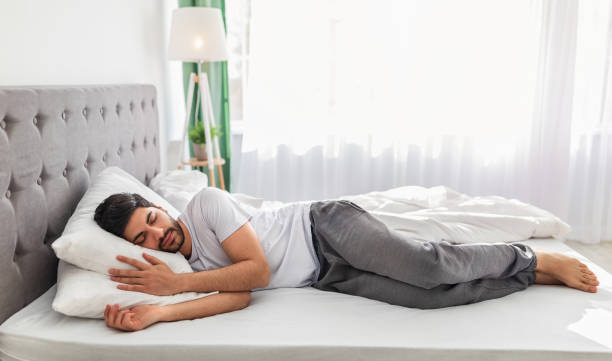Waking up feeling stiff, sore, or unrested? Your mattress might be the culprit. A poor-quality or unsuitable mattress can worsen back pain, joint discomfort, and even disrupt sleep cycles. Finding the mattress for pain-free sleep isn’t just about comfort—it’s about ensuring your body gets the support it needs to wake up refreshed and pain-free. Let’s break down how to make the right choice.
1. Understand Your Sleeping Position and Its Impact on Pain
Your preferred sleeping position plays a crucial role in determining the best mattress type for you:
- Back Sleepers: A medium-firm mattress helps keep the spine aligned while offering support to the lower back.
- Side Sleepers: A softer mattress with good pressure relief cushions the shoulders and hips, preventing joint pain.
- Stomach Sleepers: A firmer mattress is essential to prevent the midsection from sinking, which could strain the spine.
- Combination Sleepers: A medium-firm mattress with responsive support adapts to different sleeping positions throughout the night.
2. Consider the Best Mattress Type for Pain Relief
Each mattress material offers different benefits depending on the kind of support and comfort you need:
- Memory Foam: Ideal for pressure relief, as it contours to the body and evenly distributes weight.
- Innerspring: Offers firm support with a bouncy feel, good for those needing extra back support.
- Hybrid: A mix of foam and innerspring that balances support and comfort, making it a great all-around option.
- Latex: Naturally responsive and breathable, providing a cooler sleep with gentle contouring and excellent durability.
3. Prioritize Spinal Alignment and Pressure Relief
A proper mattress for pain-free sleep should maintain a neutral spine position. When lying down, your body should be aligned from head to toe without sagging or excessive pressure points. Features like zoned support or ergonomic designs can help distribute weight evenly and reduce pain.
4. Consider Firmness Levels for Optimal Comfort
Firmness isn’t one-size-fits-all. Here’s a quick guide to choosing the right firmness based on your body weight and pain points:
- Soft (3-4/10): Best for lightweight sleepers or those with joint pain needing extra cushioning.
- Medium (5-6/10): A balanced option that works for most sleepers, offering a mix of comfort and support.
- Firm (7-9/10): Ideal for heavier individuals or those with chronic back pain needing firmer support.
5. Look for Pressure-Relieving and Cooling Features
If you struggle with body aches, opt for mattresses with:
- Gel-infused memory foam: Helps regulate temperature while providing pressure relief.
- Zoned support: Targets specific areas, like the lower back and shoulders, to reduce pain.
- Breathable materials: Latex, hybrid, or cooling foam help prevent overheating, improving sleep quality.
6. Test Before You Buy (Or Opt for a Sleep Trial)
Many brands offer risk-free sleep trials, allowing you to test the mattress for 30-100 nights. This helps you determine if the mattress truly supports your body and relieves pain. Checking return policies and warranties also ensures a stress-free purchase.
7. Don’t Overlook the Role of Pillows and Mattress Toppers
Your mattress alone isn’t responsible for a pain-free sleep experience. Supportive pillows help maintain neck alignment, while mattress toppers can add an extra layer of comfort if your bed is too firm or too soft.
8. Recognizing When It’s Time for a Mattress Upgrade
If you’re waking up with more pain than when you went to bed, your mattress might be past its prime. Signs you need a new one include visible sagging, increased tossing and turning, or feeling discomfort despite sleeping the same number of hours.
A supportive mattress isn’t just about better sleep—it plays a crucial role in overall well-being. If you experience chronic discomfort, it’s worth exploring how sleep quality affects long-term health. Learn more in The Impact of Chronic Pain on Mental Health and discover how proper rest can improve both physical and emotional resilience.
Final Thoughts: Investing in Your Sleep Health
Choosing the right mattress for pain-free sleep isn’t just about comfort—it’s about improving daily quality of life. By understanding your body’s needs, considering mattress types, and prioritizing spinal support, you can wake up pain-free and ready to take on the day.For more expert guidance on sleep health and personal wellness, visit Venzec.icu and explore a range of resources designed to enhance your well-being.









